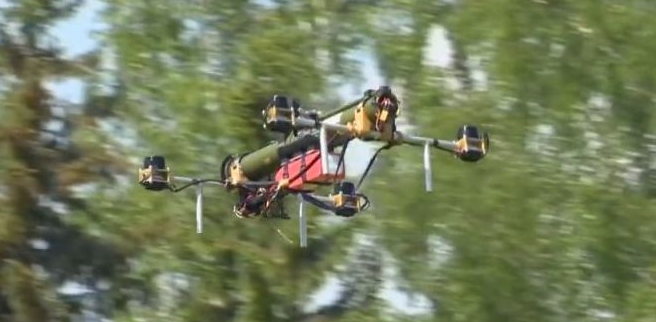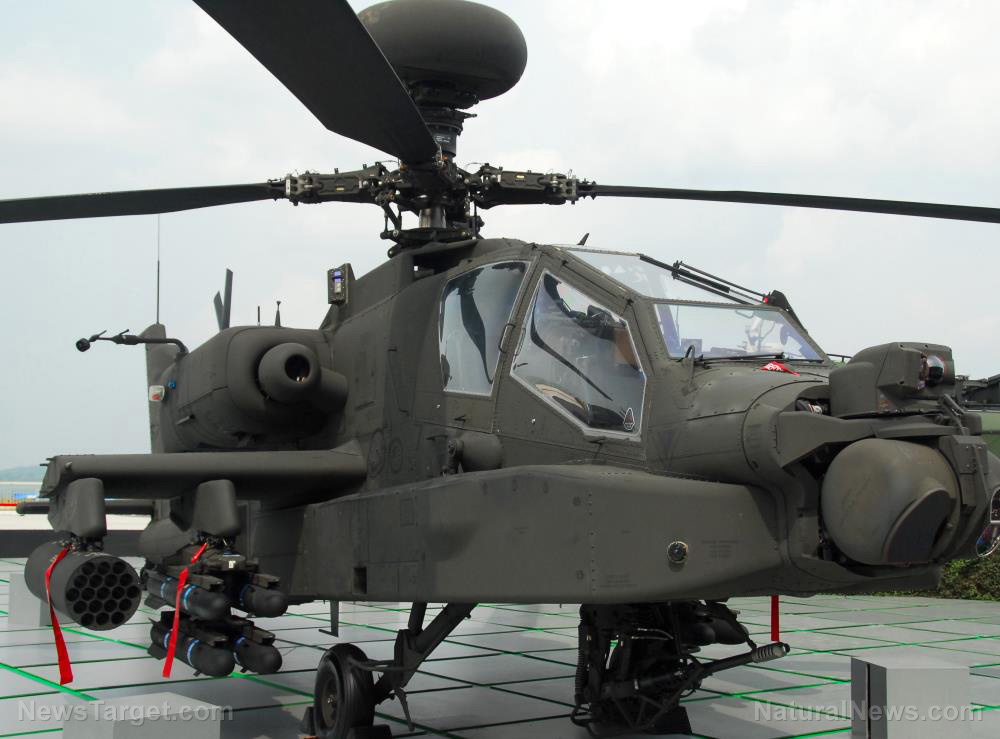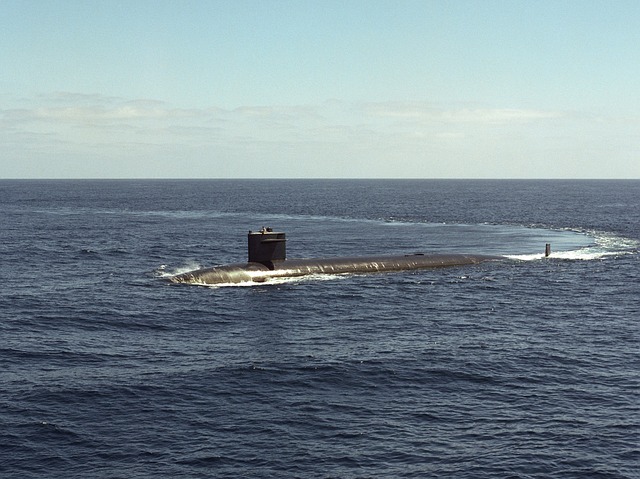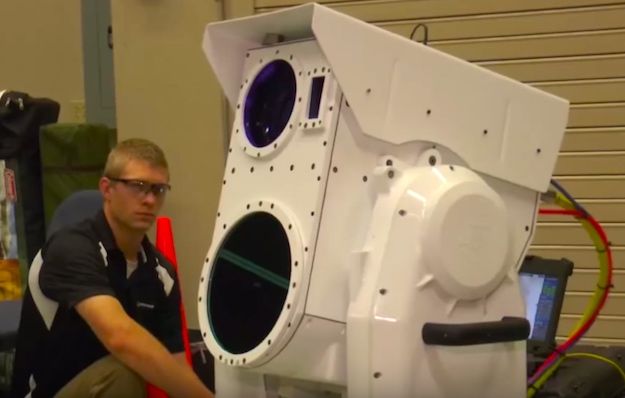New Russian military drone carries an anti-tank grenade launcher
06/11/2018 / By Jayson Veley

The Russian military flexed its metaphorical muscles recently after uploading a video to the Belarusian YouTube channel “?????? ????????,” which depicts an unmanned aerial vehicle carrying an anti-tank grenade launcher as it soars through the air. As you can see in the video below, the UAV is a bit unconventional and looks to be nothing more than a quadcopter drone built around what is most likely a Russian RPG-26 anti-tank rocket-propelled grenade launcher.
In the video demonstration (which you can watch below), the UAV moves through the air towards a target and hits it. While we still don’t have many details yet regarding how exactly the UAV will operate out on the battlefield, one can assume that one of the drone’s biggest challenges will be maintaining an appropriate distance from its target. On the one hand, the drone’s large size means that it will have to remain elevated high enough to avoid being detected or shot down, but on the other hand, it will have to remain within the effective range so that the anti-tank launcher can make an accurate shot.
Russia versus the United States
While no one would argue against the fact that the Russian military’s UAV grenade launcher would be effective out on the battlefield, this technology looks practically obsolete compared to some projects that the United States is currently working on. As reported recently by Defense One, researchers at Florida Atlantic University (FAU) are working with the U.S. Navy to create an army of robots along the coastal waters of the United States, which will be capable of launching both aerial and sub drones to neutralize incoming threats. Obviously, this will be a significant technological advancement, and will likely change the way in which our country defends itself forever.
“Our focus will be on developing a multi-vehicle system that can safely and reliably navigate coastal waters with a high level of autonomy while performing assigned tasks,” explained Manhar Dnanak, director of SeaTech, the Institute for Ocean and Systems Engineering in Florida Atlantic University’s Department of Ocean and Mechanical Engineering, in a press release.
FAU researchers are focusing much of their time and attention on developing software that will improve the sensory systems in these robots so as to help them not only avoid collisions, but also to tell the difference between allies and enemies in their immediate area. Researchers say that these features will help the aquatic robots to better plan routes when assigned specific missions. (Related: An army of hunter-killer robots that will murder humanity could arrive sooner than you think.)
As if these coastal military robots weren’t enough, the U.S. Navy has also developed an unmanned vessel called the Sea Hunter, which can navigate through open waters while also abiding by international maritime laws. According to former Defense Undersecretary Bob Work, the Sea Hunter could even potentially be weaponized, making it a real threat to be reckoned with. “We might be able to put a six-pack or a four-pack of missiles on them,” Work explained at an even sponsored by CNAS. “Now, imagine 50 of these distributed and operating together under the hands of a flotilla commander. This is going to be a Navy unlike any navy in history, a human-machine collaborative battle fleet that will confound our enemies.” (Related: The U.S. military is expected to have more robot soldiers than humans by the year 2025.)
The future of warfare
It’s incredible that we are now living in a time where even an anti-tank grenade launcher attached to an unmanned aerial vehicle pales in comparison to some of the other military technology being developed. The future of warfare is fast moving, and if you are a nation that is developing anything less than the most advanced military technology the world has ever seen, then you are a nation that is inevitably going to be left behind.
Sources include:
Tagged Under: anti-tank weapons, drones, inventions, military, military tech, military technology, robots, Russia, technology, War, war technology




















